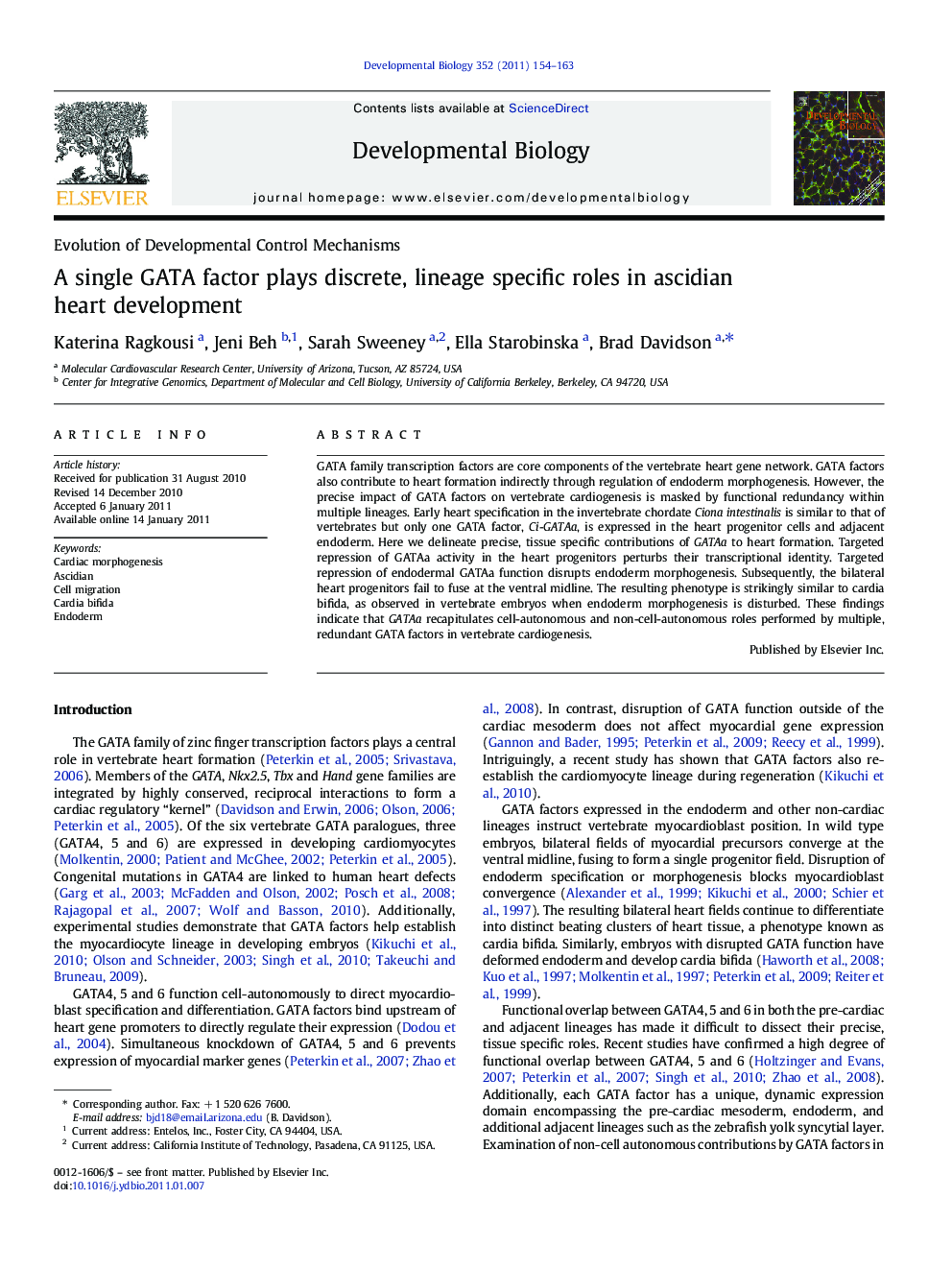| Article ID | Journal | Published Year | Pages | File Type |
|---|---|---|---|---|
| 2173544 | Developmental Biology | 2011 | 10 Pages |
GATA family transcription factors are core components of the vertebrate heart gene network. GATA factors also contribute to heart formation indirectly through regulation of endoderm morphogenesis. However, the precise impact of GATA factors on vertebrate cardiogenesis is masked by functional redundancy within multiple lineages. Early heart specification in the invertebrate chordate Ciona intestinalis is similar to that of vertebrates but only one GATA factor, Ci-GATAa, is expressed in the heart progenitor cells and adjacent endoderm. Here we delineate precise, tissue specific contributions of GATAa to heart formation. Targeted repression of GATAa activity in the heart progenitors perturbs their transcriptional identity. Targeted repression of endodermal GATAa function disrupts endoderm morphogenesis. Subsequently, the bilateral heart progenitors fail to fuse at the ventral midline. The resulting phenotype is strikingly similar to cardia bifida, as observed in vertebrate embryos when endoderm morphogenesis is disturbed. These findings indicate that GATAa recapitulates cell-autonomous and non-cell-autonomous roles performed by multiple, redundant GATA factors in vertebrate cardiogenesis.
Research Highlights► Cell-autonomous GATAa activity mediates cardioblast migration and proliferation. ► Cell-autonomous GATAa activity mediates cardioblast transcriptional identity. ► Disruption of endodermal GATAa activity perturbs posterior endoderm morphogenesis. ► Endodermal GATAa activity does not mediate cardioblast transcriptional identity.
